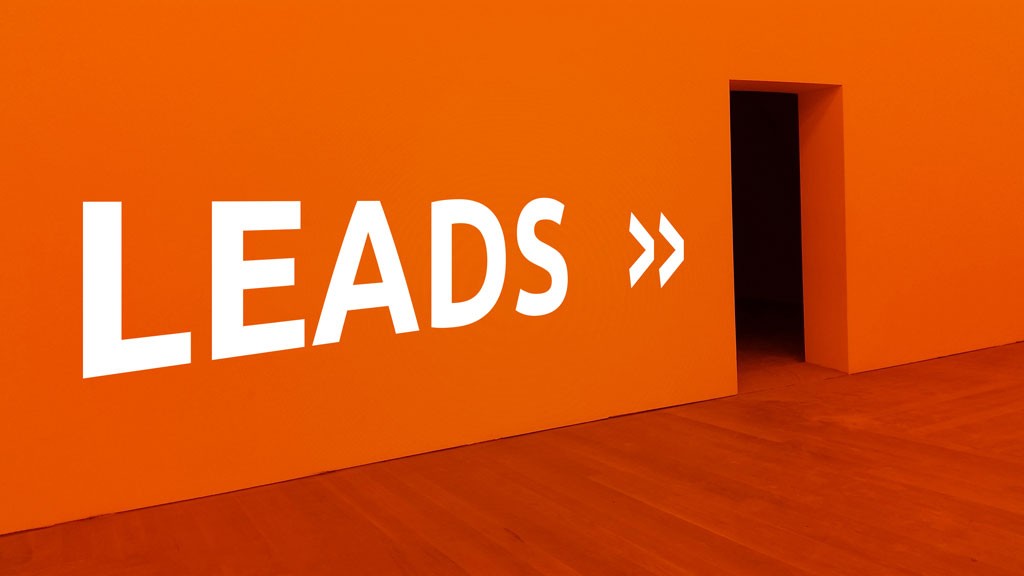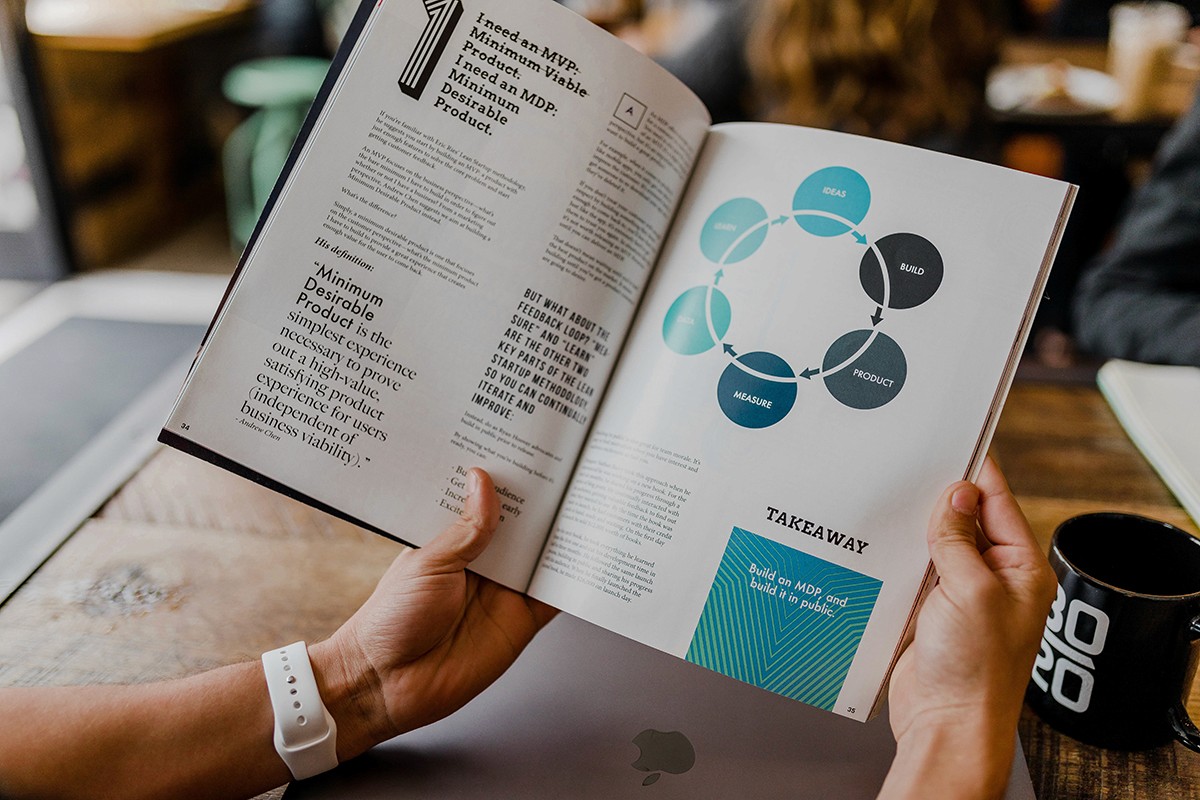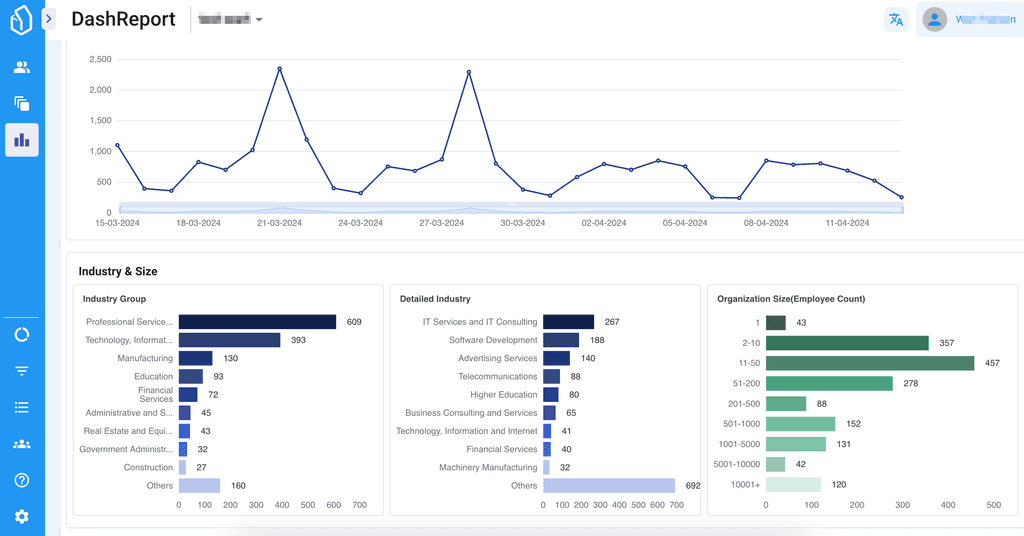
Marketing|Sales
How to Price a New Product or Service
How to Price a New Product or Service
2016-05-09

Marketing|Sales
How to Price a New Product or Service
2016-05-09

Marketing|Sales
How to Price a New Product or Service
2016-05-09
Table of Contents
Auto Generated TOC
Auto Generated TOC
Auto Generated TOC
Auto Generated TOC
When you price a new product or service, the price you land on can make or break your company.
Pricing is so vital for the success of a company because the price of a new product needs to be low enough for people to want to buy it, but also high enough for you to actually make a profit.
To find the right price, you should experiment like crazy until you have that “aha” moment that drives your company forward, faster.
What Price Is Most Realistic?
Before you launch your product, it’s important that you take the time to consider what price is most realistic.
A realistic price means that you’ve decided on a price that is both competitive AND profitable. You need to not just pick a number that sounds good, but pick a number that takes into account the cost of running your company. You should be thinking about how much you are spending on rent, employees, taxes, and similar and using this information to guide your pricing decision.
While making your pricing decision, you should also have a clear understanding of what your competitors are charging so that you can be priced competitively against them.
Lastly, you’ll want to estimate how much profit you think that you can achieve in different amounts of time. How much profit do you think you can make in six months, one year, five years (and so on)?
Once you’ve taken the first steps of the pricing decision journey, you’ll want to test your price with your audience to make sure the market agrees with your pricing choice.
To accurately test your price with your audience, you need to decide how large of a sample size you want, how you want to test the price, who your test subjects will be, and how you’ll find your test subjects. Typically, the more people that you can test your price on, the more accurate of a result you’ll get with price testing.
Pricing Optimization Tactics
Marketers have a lot of options for how they can collect information on how much consumers want to pay for their product or service.
One popular pricing tactic is to do what is called the Gabor-Granger method. This is a method used to determine the price of a new product or service, developed by Clive Granger and André Gabor in the 1960s. This approach asks a group of test subjects how likely it is that they would purchase a product at various prices. Once the consumer hits a point where they say they would no longer make the purchase, the marketer knows that they've overstepped what consumers feel comfortable paying.Another pricing survey approach is called the Van Westendorp Price Sensitivity Meter (PSM). This technique asks potential customers four different questions to determine when they think a product would be too expensive, too cheap, getting expensive, or feel like a bargain. Using the answers to these questions, you can figure out what an acceptable price range for customers would be.The third pricing tactic that we'll cover is called Conjoint Analysis. In conjoint analysis, consumers are asked to place a value on the various aspects of a product or service, rather than on the value of the entire product. The goal of conjoint analysis is to see how much consumers are willing to pay for different product features. Knowing what consumers are willing to pay for different product features is a great way to work out what an acceptable product price would be.The fourth and final pricing approach we'll talk about is called Monadic Price Testing. In this approach, which is the simplest of the four, you show your test subjects a product or service at a given price and ask them if they'd purchase the product.
Picking which pricing approach typically comes down to personal preference, since they're all great options. The biggest hurdle you'll have when using any of these methods is getting reliable responses from people since you're asking them about a hypothetical situation that is in the future. Make sure that you word your questions in a way that makes it easier for your test subjects to imagine themselves in the future and accurately predict how they'd react.
Another Approach...
Split testing is also a very accurate and reliable approach to product pricing. With split testing, rather than asking consumers to predict their future actions in a hypothetical situation, you measure actual consumer behavior. Split testing (or A/B testing), gives marketers the opportunity to see pricing options in action in real life when consumers are making actual purchasing decisions.
Using split testing, you can track landing page behavior, such as time spent on a page, purchases, free trial sign-ups, and other important company metrics. Once you have a statistically significant sample size on your high-converting landing page, you can observe your data to decide which pricing consumers best react to.
The Bottom Line
Deciding on a price before launching a product is a smart plan. Figuring out which price is best will play a huge role in the profitability and success of your product or service. Observe how your consumers react to pricing options, ask questions, and make what you consider a smart pricing choice (don’t just pick a number because you think it sounds good!).
When you price a new product or service, the price you land on can make or break your company.
Pricing is so vital for the success of a company because the price of a new product needs to be low enough for people to want to buy it, but also high enough for you to actually make a profit.
To find the right price, you should experiment like crazy until you have that “aha” moment that drives your company forward, faster.
What Price Is Most Realistic?
Before you launch your product, it’s important that you take the time to consider what price is most realistic.
A realistic price means that you’ve decided on a price that is both competitive AND profitable. You need to not just pick a number that sounds good, but pick a number that takes into account the cost of running your company. You should be thinking about how much you are spending on rent, employees, taxes, and similar and using this information to guide your pricing decision.
While making your pricing decision, you should also have a clear understanding of what your competitors are charging so that you can be priced competitively against them.
Lastly, you’ll want to estimate how much profit you think that you can achieve in different amounts of time. How much profit do you think you can make in six months, one year, five years (and so on)?
Once you’ve taken the first steps of the pricing decision journey, you’ll want to test your price with your audience to make sure the market agrees with your pricing choice.
To accurately test your price with your audience, you need to decide how large of a sample size you want, how you want to test the price, who your test subjects will be, and how you’ll find your test subjects. Typically, the more people that you can test your price on, the more accurate of a result you’ll get with price testing.
Pricing Optimization Tactics
Marketers have a lot of options for how they can collect information on how much consumers want to pay for their product or service.
One popular pricing tactic is to do what is called the Gabor-Granger method. This is a method used to determine the price of a new product or service, developed by Clive Granger and André Gabor in the 1960s. This approach asks a group of test subjects how likely it is that they would purchase a product at various prices. Once the consumer hits a point where they say they would no longer make the purchase, the marketer knows that they've overstepped what consumers feel comfortable paying.Another pricing survey approach is called the Van Westendorp Price Sensitivity Meter (PSM). This technique asks potential customers four different questions to determine when they think a product would be too expensive, too cheap, getting expensive, or feel like a bargain. Using the answers to these questions, you can figure out what an acceptable price range for customers would be.The third pricing tactic that we'll cover is called Conjoint Analysis. In conjoint analysis, consumers are asked to place a value on the various aspects of a product or service, rather than on the value of the entire product. The goal of conjoint analysis is to see how much consumers are willing to pay for different product features. Knowing what consumers are willing to pay for different product features is a great way to work out what an acceptable product price would be.The fourth and final pricing approach we'll talk about is called Monadic Price Testing. In this approach, which is the simplest of the four, you show your test subjects a product or service at a given price and ask them if they'd purchase the product.
Picking which pricing approach typically comes down to personal preference, since they're all great options. The biggest hurdle you'll have when using any of these methods is getting reliable responses from people since you're asking them about a hypothetical situation that is in the future. Make sure that you word your questions in a way that makes it easier for your test subjects to imagine themselves in the future and accurately predict how they'd react.
Another Approach...
Split testing is also a very accurate and reliable approach to product pricing. With split testing, rather than asking consumers to predict their future actions in a hypothetical situation, you measure actual consumer behavior. Split testing (or A/B testing), gives marketers the opportunity to see pricing options in action in real life when consumers are making actual purchasing decisions.
Using split testing, you can track landing page behavior, such as time spent on a page, purchases, free trial sign-ups, and other important company metrics. Once you have a statistically significant sample size on your high-converting landing page, you can observe your data to decide which pricing consumers best react to.
The Bottom Line
Deciding on a price before launching a product is a smart plan. Figuring out which price is best will play a huge role in the profitability and success of your product or service. Observe how your consumers react to pricing options, ask questions, and make what you consider a smart pricing choice (don’t just pick a number because you think it sounds good!).
When you price a new product or service, the price you land on can make or break your company.
Pricing is so vital for the success of a company because the price of a new product needs to be low enough for people to want to buy it, but also high enough for you to actually make a profit.
To find the right price, you should experiment like crazy until you have that “aha” moment that drives your company forward, faster.
What Price Is Most Realistic?
Before you launch your product, it’s important that you take the time to consider what price is most realistic.
A realistic price means that you’ve decided on a price that is both competitive AND profitable. You need to not just pick a number that sounds good, but pick a number that takes into account the cost of running your company. You should be thinking about how much you are spending on rent, employees, taxes, and similar and using this information to guide your pricing decision.
While making your pricing decision, you should also have a clear understanding of what your competitors are charging so that you can be priced competitively against them.
Lastly, you’ll want to estimate how much profit you think that you can achieve in different amounts of time. How much profit do you think you can make in six months, one year, five years (and so on)?
Once you’ve taken the first steps of the pricing decision journey, you’ll want to test your price with your audience to make sure the market agrees with your pricing choice.
To accurately test your price with your audience, you need to decide how large of a sample size you want, how you want to test the price, who your test subjects will be, and how you’ll find your test subjects. Typically, the more people that you can test your price on, the more accurate of a result you’ll get with price testing.
Pricing Optimization Tactics
Marketers have a lot of options for how they can collect information on how much consumers want to pay for their product or service.
One popular pricing tactic is to do what is called the Gabor-Granger method. This is a method used to determine the price of a new product or service, developed by Clive Granger and André Gabor in the 1960s. This approach asks a group of test subjects how likely it is that they would purchase a product at various prices. Once the consumer hits a point where they say they would no longer make the purchase, the marketer knows that they've overstepped what consumers feel comfortable paying.Another pricing survey approach is called the Van Westendorp Price Sensitivity Meter (PSM). This technique asks potential customers four different questions to determine when they think a product would be too expensive, too cheap, getting expensive, or feel like a bargain. Using the answers to these questions, you can figure out what an acceptable price range for customers would be.The third pricing tactic that we'll cover is called Conjoint Analysis. In conjoint analysis, consumers are asked to place a value on the various aspects of a product or service, rather than on the value of the entire product. The goal of conjoint analysis is to see how much consumers are willing to pay for different product features. Knowing what consumers are willing to pay for different product features is a great way to work out what an acceptable product price would be.The fourth and final pricing approach we'll talk about is called Monadic Price Testing. In this approach, which is the simplest of the four, you show your test subjects a product or service at a given price and ask them if they'd purchase the product.
Picking which pricing approach typically comes down to personal preference, since they're all great options. The biggest hurdle you'll have when using any of these methods is getting reliable responses from people since you're asking them about a hypothetical situation that is in the future. Make sure that you word your questions in a way that makes it easier for your test subjects to imagine themselves in the future and accurately predict how they'd react.
Another Approach...
Split testing is also a very accurate and reliable approach to product pricing. With split testing, rather than asking consumers to predict their future actions in a hypothetical situation, you measure actual consumer behavior. Split testing (or A/B testing), gives marketers the opportunity to see pricing options in action in real life when consumers are making actual purchasing decisions.
Using split testing, you can track landing page behavior, such as time spent on a page, purchases, free trial sign-ups, and other important company metrics. Once you have a statistically significant sample size on your high-converting landing page, you can observe your data to decide which pricing consumers best react to.
The Bottom Line
Deciding on a price before launching a product is a smart plan. Figuring out which price is best will play a huge role in the profitability and success of your product or service. Observe how your consumers react to pricing options, ask questions, and make what you consider a smart pricing choice (don’t just pick a number because you think it sounds good!).
When you price a new product or service, the price you land on can make or break your company.
Pricing is so vital for the success of a company because the price of a new product needs to be low enough for people to want to buy it, but also high enough for you to actually make a profit.
To find the right price, you should experiment like crazy until you have that “aha” moment that drives your company forward, faster.
What Price Is Most Realistic?
Before you launch your product, it’s important that you take the time to consider what price is most realistic.
A realistic price means that you’ve decided on a price that is both competitive AND profitable. You need to not just pick a number that sounds good, but pick a number that takes into account the cost of running your company. You should be thinking about how much you are spending on rent, employees, taxes, and similar and using this information to guide your pricing decision.
While making your pricing decision, you should also have a clear understanding of what your competitors are charging so that you can be priced competitively against them.
Lastly, you’ll want to estimate how much profit you think that you can achieve in different amounts of time. How much profit do you think you can make in six months, one year, five years (and so on)?
Once you’ve taken the first steps of the pricing decision journey, you’ll want to test your price with your audience to make sure the market agrees with your pricing choice.
To accurately test your price with your audience, you need to decide how large of a sample size you want, how you want to test the price, who your test subjects will be, and how you’ll find your test subjects. Typically, the more people that you can test your price on, the more accurate of a result you’ll get with price testing.
Pricing Optimization Tactics
Marketers have a lot of options for how they can collect information on how much consumers want to pay for their product or service.
One popular pricing tactic is to do what is called the Gabor-Granger method. This is a method used to determine the price of a new product or service, developed by Clive Granger and André Gabor in the 1960s. This approach asks a group of test subjects how likely it is that they would purchase a product at various prices. Once the consumer hits a point where they say they would no longer make the purchase, the marketer knows that they've overstepped what consumers feel comfortable paying.Another pricing survey approach is called the Van Westendorp Price Sensitivity Meter (PSM). This technique asks potential customers four different questions to determine when they think a product would be too expensive, too cheap, getting expensive, or feel like a bargain. Using the answers to these questions, you can figure out what an acceptable price range for customers would be.The third pricing tactic that we'll cover is called Conjoint Analysis. In conjoint analysis, consumers are asked to place a value on the various aspects of a product or service, rather than on the value of the entire product. The goal of conjoint analysis is to see how much consumers are willing to pay for different product features. Knowing what consumers are willing to pay for different product features is a great way to work out what an acceptable product price would be.The fourth and final pricing approach we'll talk about is called Monadic Price Testing. In this approach, which is the simplest of the four, you show your test subjects a product or service at a given price and ask them if they'd purchase the product.
Picking which pricing approach typically comes down to personal preference, since they're all great options. The biggest hurdle you'll have when using any of these methods is getting reliable responses from people since you're asking them about a hypothetical situation that is in the future. Make sure that you word your questions in a way that makes it easier for your test subjects to imagine themselves in the future and accurately predict how they'd react.
Another Approach...
Split testing is also a very accurate and reliable approach to product pricing. With split testing, rather than asking consumers to predict their future actions in a hypothetical situation, you measure actual consumer behavior. Split testing (or A/B testing), gives marketers the opportunity to see pricing options in action in real life when consumers are making actual purchasing decisions.
Using split testing, you can track landing page behavior, such as time spent on a page, purchases, free trial sign-ups, and other important company metrics. Once you have a statistically significant sample size on your high-converting landing page, you can observe your data to decide which pricing consumers best react to.
The Bottom Line
Deciding on a price before launching a product is a smart plan. Figuring out which price is best will play a huge role in the profitability and success of your product or service. Observe how your consumers react to pricing options, ask questions, and make what you consider a smart pricing choice (don’t just pick a number because you think it sounds good!).

Generate More Qualified Leads with LeadBoxer
Create a (free) account or get a demo and find out how we can help you.

Generate More Qualified Leads with LeadBoxer
Create a (free) account or get a demo and find out how we can help you.

Generate More Qualified Leads with LeadBoxer
Create a (free) account or get a demo and find out how we can help you.

Generate More Qualified Leads with LeadBoxer
Create a (free) account or get a demo and find out how we can help you.
Get Started with LeadBoxer
LeadBoxer can help you quickly generate more leads
Get more insight into your online audience and their behaviour, and turn this data into actual opportunities.
Start Now!
Get Started with LeadBoxer
LeadBoxer can help you quickly generate more leads
Get more insight into your online audience and their behaviour, and turn this data into actual opportunities.
Start Now!
Get Started with LeadBoxer
LeadBoxer can help you quickly generate more leads
Get more insight into your online audience and their behaviour, and turn this data into actual opportunities.
Start Now!
Get Started with LeadBoxer
LeadBoxer can help you quickly generate more leads
Get more insight into your online audience and their behaviour, and turn this data into actual opportunities.
Start Now!
Other content in category
Marketing|Sales



Automated Marketing Lead Lifecycle Management in a Business-to-Business Partner Ecosystem



How You Can Close More Deals Faster With a B2B Referral Program



Hyper Personalization & Other Ways to Shorten the Sales Life Cycle



Using CRM to Craft a Winning Customer Centric Strategy



How Long Should a SaaS Free Trial Be?

Supercharge your marketing results with LeadBoxer!
Analyze campaigns and traffic, segement by industry, drilldown on company size and filter by location. See your Top pages, top accounts, and many other metrics.


Supercharge your marketing results with LeadBoxer!
Analyze campaigns and traffic, segement by industry, drilldown on company size and filter by location. See your Top pages, top accounts, and many other metrics.


Supercharge your marketing results with LeadBoxer!
Analyze campaigns and traffic, segement by industry, drilldown on company size and filter by location. See your Top pages, top accounts, and many other metrics.


Supercharge your marketing results with LeadBoxer!
Analyze campaigns and traffic, segement by industry, drilldown on company size and filter by location. See your Top pages, top accounts, and many other metrics.


